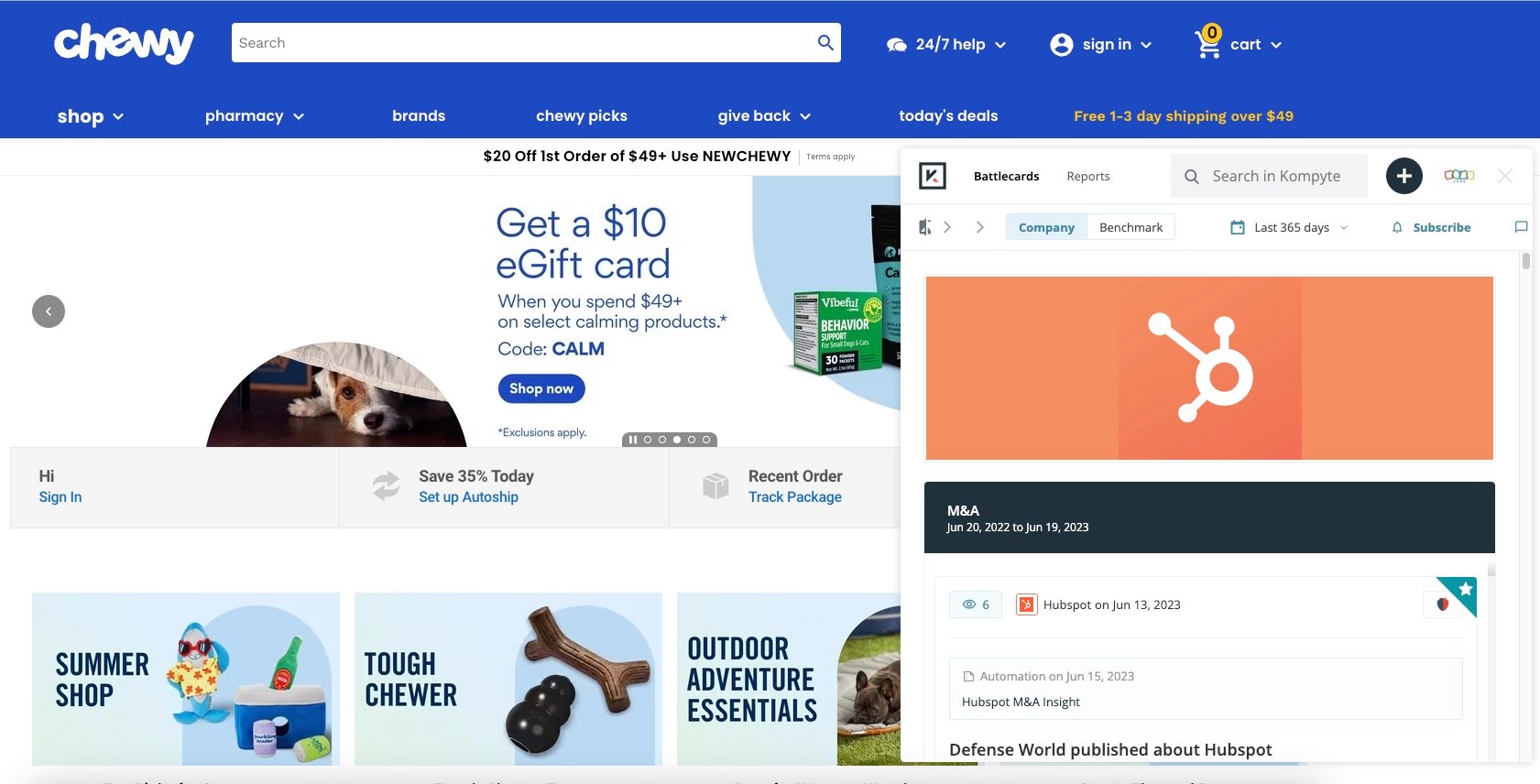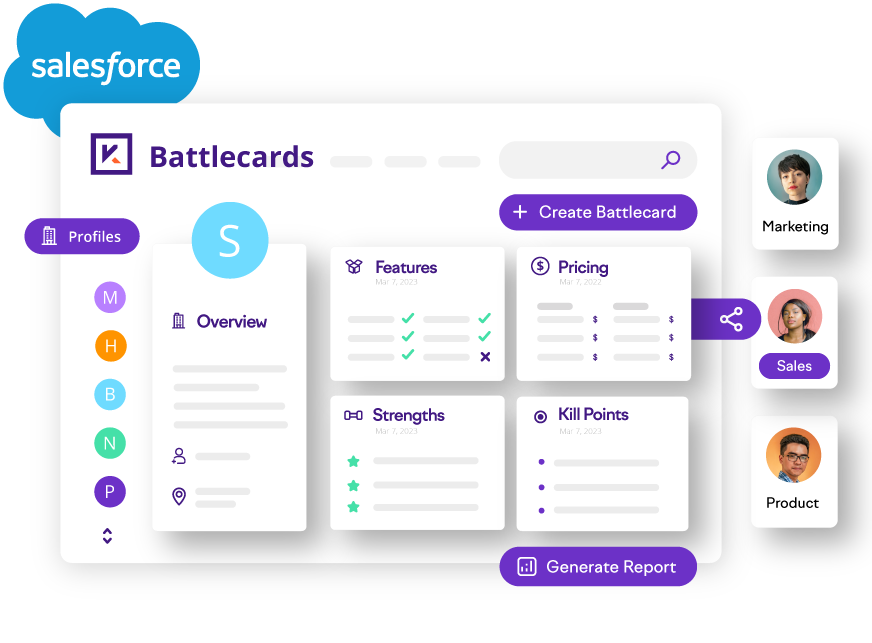5 Steps to Achieve Data-Driven Growth Across Your Organization
Building a business strategy that will keep you competitive requires understanding what your customers want and need, and what their other current...
Explore the 5 most common objections, and unlock the transformative power of narrative. Get storytelling methods, inspiration sources, and practical tips.
.jpg)
In a perfect world, each of your sales calls goes flawlessly. The potential buyer nods vigorously, laughs at all your jokes, and halfway through your presentation asks, "How do I sign up?"
But this is the real world. In the real world, you're going to face objections. And plenty of them.
At first glance, objections seem to exist solely to poke holes in your sales pitch and squash your win rate.
However, once you learn more about sales objections and how easy it is to overcome them, you might even start to like them. Really!
That's what we're here for today. Diving into the real gold behind sales objections and the storytelling you’ll use to overcome those suggestions.
By the end of this article, you'll have more confidence in overcoming objections and closing more deals.
A sales objection occurs when a prospect shares their hesitation or doubt about moving further in the sales process.
An objection in sales is different than a rejection in two ways.
In both examples, it’s clear that a sales objection isn't game over.
In fact, a study examining over 224,000 sales calls revealed that each time an objection was raised, the win rate increased by almost 30 percent.
"... Whenever a prospect raised an objection, the win rate went UP by almost 30 percent."
This is good news for you as a sales professional. If you can handle your prospect's objection, you instantly increase your chances of closing the deal.
Potential buyers are picky, and the topics of sales objections can vary wildly. However, five types of sales objections come up repeatedly: price, need, timeline, trust, and competition.
So remember that just as you hope to make a personal connection with your prospect to close a deal, that prospect is looking to bond with you to get more for less.
A price objection happens when the prospect tells you:
Note that these price, timeline, trust, and competition objections aren't outright dismissals. While need objections are slightly more challenging, they're not lost causes.
You can easily conquer them with the right story. Let's learn why ... and how.
Now that you know the five most common types of sales objections, how should you handle them? How do you erase a prospect's doubt and convince them to move forward with you?
If your prospect is shopping around, the sales reps from your competitors will likely respond to these objections by (in precise order):
And just like those reps, you must actively listen and confirm your understanding with the prospect. That's how you build trust.
But add storytelling to the mix, and you give the prospect a host of reasons they should close the deal with you.
First, your story will balance out all the stats and benchmark figures the prospect jots down about your product or service during the sales call. They now have time to sit back, look you in the eyes, and make a real connection.
Then, with the buyer's full attention, you can overcome an objection while humanizing the selling process and differentiating your product and sales conversation.
These differentiators will stick with prospects and motivate them to act (i.e. help you reach your sales quota!).
Storytelling Pro Tip: You don't need a degree in creative writing to build a captivating story. You just need some plug-and-play frameworks to build your anecdote.
Luckily, there are simple, tried-and-true frameworks for you to craft your sales-winning stories, including PAS and BAB.
Pain, Agitation, and Solution (PAS). Many copywriters use the PAS method to get leads to say yes and act. If PAS works for them, why not use it for the same objective -- to get sales?
In a PAS story, you start by stating the "problem."
Then, "agitate." This is the fun part. Emphasize all the financial and emotional baggage that comes with that problem. Make it dramatic as you connect the story to the heart of your prospect.
Finally, give the "solution." Your prospect will be pleased to hear about your solution after being all worked up during the agitation part of your story!
Take insurance giant Allstate's "Mayhem Bear" ad.
The problem here is that a hungry bear is looking for food in your car.
The agitation happens with each smash of a window and each rip of a door. You're now facing a huge bill for repairs.
Allstate stirs the pot by casually mentioning that your current insurance probably won't cover damages incurred by the bear. Yikes!
In the last few seconds of the ad, Allstate drops its name as the solution to disastrous car repair insurance.
Jarrett Stevenson, Mid-Market Account Executive at Open Asset, shared how his PAS story landed one of his biggest deals in a prior role.
“I was on a sales call with the team at King’s College in London.
Halfway through the presentation, I could tell something was off. They weren’t engaged, and it just wasn’t clicking for them. I stopped and began asking questions. Turns out that they were having trust issues, especially regarding their institution’s regulations and security.
So, I pulled out a story on how the social media team at the (nearby) University of Cambridge had those exact concerns. I painted the picture of how frustrating everything was before they came to us. All the troubles of regulations and security. Then, I shared their results and testimonial on how amazing it’s been for them since they joined us.
As soon as I told them that story, everyone’s eyes lit up. A decision maker on the call said, ‘Wow! We know and respect Cambridge. If it’s good enough for them, it’s good enough for us.’
Instantly, their whole team was super engaged with the presentation, and they bought my product. I’m 100% convinced it’s because I used that story.”
Before-after-bridge (BAB). The BAB methodology is another popular framework among sales-converting copywriters. The first two parts of BAB are similar to the "How it started/How it's going" meme.
Here's a great BAB example from the seasoning company McCormick.
The ad starts with three stressed-out home cooks, each with their own tense situations. That's the before scenario.
These cooks prepare their dishes from start to finish with a suspenseful, Top Chef-like intensity.
The ad then shows a sincere love and appreciation for the finished food. The kids happily scarf down dinner, the PTA moms stop judging, and Nona cracks a smile. An ideal after stage.
The ad's voiceover then explains that these dinners went from dumpster fires to warm, loving moments because the chefs used McCormick seasonings. In this case, McCormick is the bridge.
So, now we have two frameworks to build your stories. Some of you might take stories you have and plug them into a PAS or BAB format.
And some of you might ask, "Uh, what stories?"
Fear not! If you're low on inspiration, here’s where you’ll find compelling content you can easily repurpose into a story on your next sales call.
Existing testimonials and case studies. Check your CRM, case studies, or ask your customer success team, how your customers:
Reviews. Customer reviews are a great source of social proof, as they're written directly by the customer and in their own words.
Visit third-party review sites like G2 or Capterra for similar story inspiration. On G2, you can filter reviews to hone in on a particular objection.
Battlecards. High-performing sales teams use Battlecards to win deals. Kompyte customers who use Battlecards see their average win rates increase by up to 30%.
The information on Battlecards lets you respond quickly when a prospect asks you a question that catches you off guard. Think of Battlecards as your wingperson!
Battlecards typically feature important, bite-sized information, including:
Unlike a human wingperson, Kompyte Battlecards are on 24/7 to help overcome prospects' doubts. The Chrome Extension gives you instant online access to Battlecards. To overcome an objection, find the Rebuttals section to find and respond with an appropriate story.

The process is so quick that your prospect never knows you went hunting for a response.
Kompyte's Battlecards also integrate with Hubspot and Salesforce, so you never have to leave those platforms to get the stories you need to engage your buyer and move your deal forward.

If your sales team doesn't yet have Battlecards, why not try this free objection handling template? Use the template to document your buyer's common pain points and stories to overcome those issues.
Once you've landed on a relevant story for a common objection and put that story through a storytelling framework, you're just about there!
Now, it's time to work on how you deliver your compelling, perfectly framed story.
The key is practice, practice, practice.
If you're a sales rep, ask a colleague for a 1:1 to review each other's sales objection storytelling. Give constructive feedback and listen carefully to your peers' suggestions.
If you are a sales team leader, dedicate a part of team meetings to storytelling. Role play the telling of a story aimed at squashing an objection.
Search your conversational intelligence tools like Gong to find out how your reps used storytelling as a method of objection handling. At your next 1:1 meeting with a rep, review their storytelling delivery, pointing out what worked and offering suggestions for improvement.
And continue to update your Battlecards with your best stories to overcome objections.
Embrace storytelling as a key component of your sales strategy to navigate objections with ease, gain your prospect's attention, and increase your win rates.
Continuously practice and refine your storytelling delivery to respond to objections with confidence and effectiveness. You got this!
Building a business strategy that will keep you competitive requires understanding what your customers want and need, and what their other current...
The end of the year is near, but as marketers, you know that this means the planning and budgeting season is here, or at least it should be.
From prosperity to a global pandemic, companies are constantly being forced to redefine and position themselves. So what is the cost of maintaining...
Be the first to know about new B2B SaaS Marketing insights to build or refine your marketing function with the tools and knowledge of today’s industry.